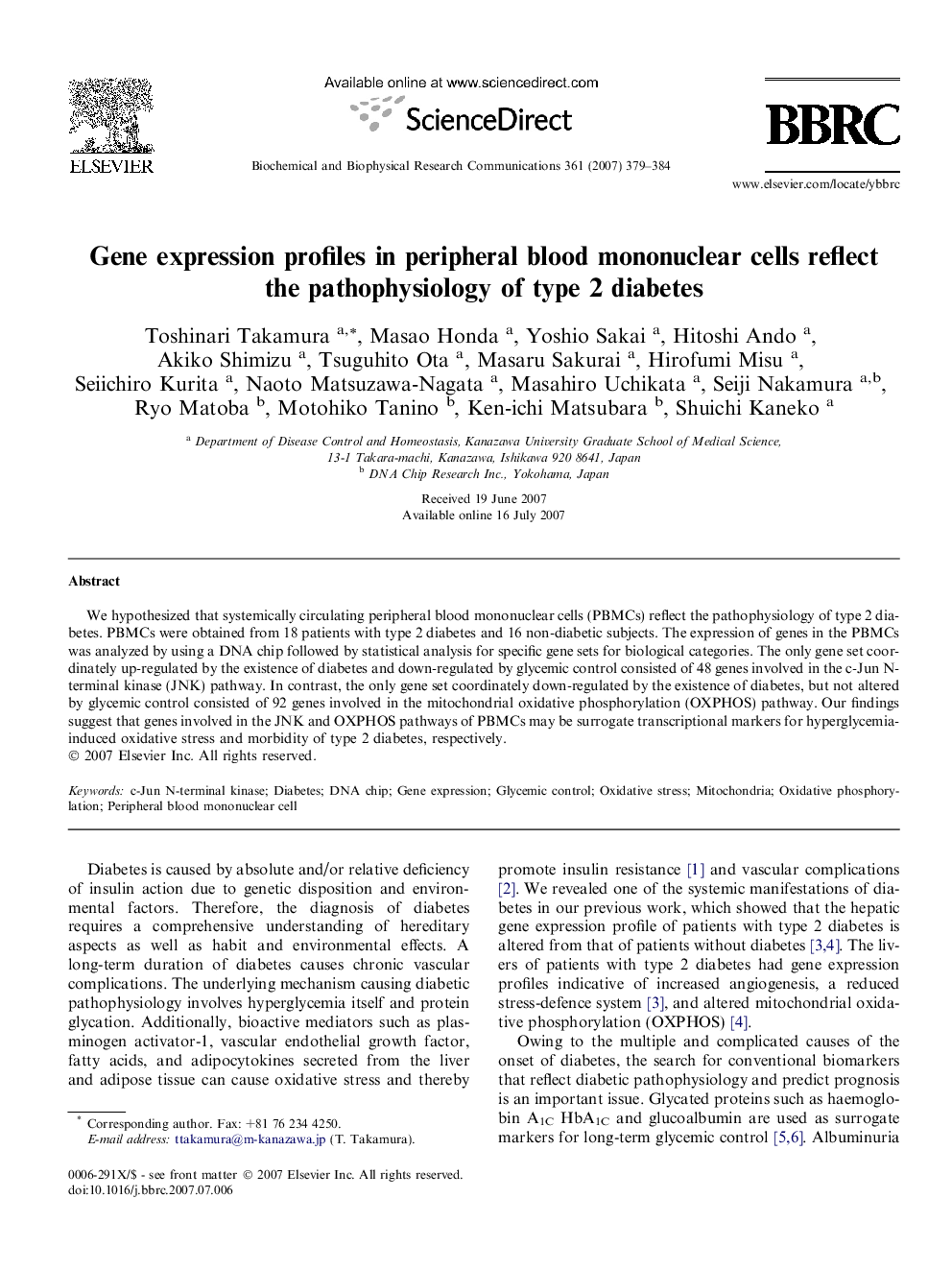| Article ID | Journal | Published Year | Pages | File Type |
|---|---|---|---|---|
| 10767053 | Biochemical and Biophysical Research Communications | 2007 | 6 Pages |
Abstract
We hypothesized that systemically circulating peripheral blood mononuclear cells (PBMCs) reflect the pathophysiology of type 2 diabetes. PBMCs were obtained from 18 patients with type 2 diabetes and 16 non-diabetic subjects. The expression of genes in the PBMCs was analyzed by using a DNA chip followed by statistical analysis for specific gene sets for biological categories. The only gene set coordinately up-regulated by the existence of diabetes and down-regulated by glycemic control consisted of 48 genes involved in the c-Jun N-terminal kinase (JNK) pathway. In contrast, the only gene set coordinately down-regulated by the existence of diabetes, but not altered by glycemic control consisted of 92 genes involved in the mitochondrial oxidative phosphorylation (OXPHOS) pathway. Our findings suggest that genes involved in the JNK and OXPHOS pathways of PBMCs may be surrogate transcriptional markers for hyperglycemia-induced oxidative stress and morbidity of type 2 diabetes, respectively.
Keywords
Related Topics
Life Sciences
Biochemistry, Genetics and Molecular Biology
Biochemistry
Authors
Toshinari Takamura, Masao Honda, Yoshio Sakai, Hitoshi Ando, Akiko Shimizu, Tsuguhito Ota, Masaru Sakurai, Hirofumi Misu, Seiichiro Kurita, Naoto Matsuzawa-Nagata, Masahiro Uchikata, Seiji Nakamura, Ryo Matoba, Motohiko Tanino, Ken-ichi Matsubara,
